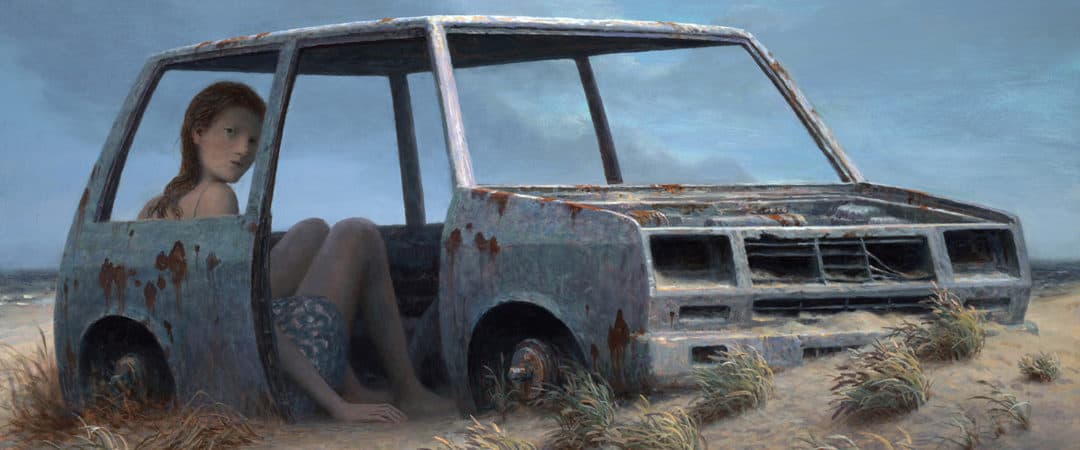
Aron Wiesenfeld‘s painting The Last Stop depicts a young woman, maybe fourteen-years-old, sitting inside of the rusted body of a car abandoned in the desert. The title, The Last Stop, implies a journey, the young woman, present from the beginning and the last one alive at the end overgrown inside of the useless shell that guided her youth. Wiesenfeld’s piece arrives at the moment when one journey ends and a new one begins.
The painting is framed so the viewer locks eyes with the young woman. Her gaze asks nothing of you, but she wants you to know she sees you. She is there, within her own growth, dismissive of your acknowledgment. Wiesenfeld is in search of moments like these, the possibilities of intimacy between art and audience.
Coming from the world of mainstream comic books, Wiesenfeld has a clear sense of narrative and purpose. All he learned from comic books on storytelling and composition is present in his paintings — single panel mid-histories of the lives of young women, adolescents on the way into adulthood.
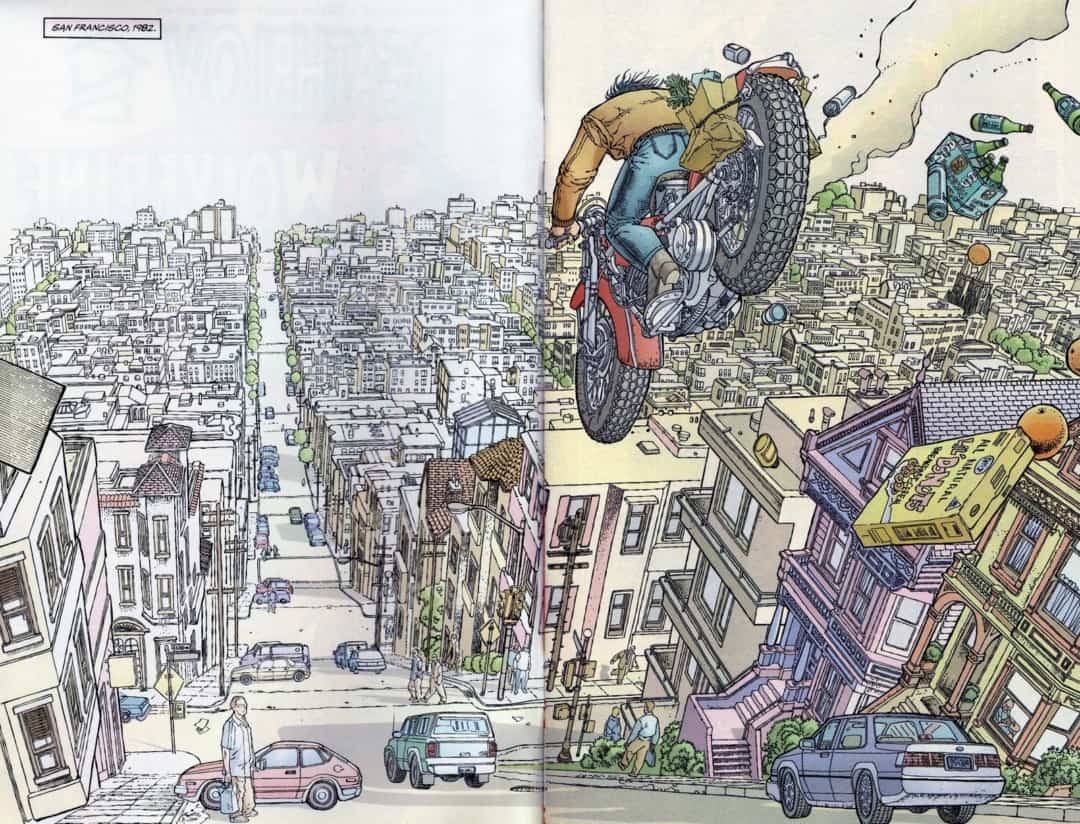
Double page from a ‘Deathblow and Wolverine’ comic drawn by Aron Wiesenfeld (image courtesy of iloverobliefeld.com)
CJ: Before you established yourself as a fine artist, you had quite a career doing pencils in the comics industry. Looking at your early work with 1993’s X-Men Annual #2 through Team 7 and Wildstorm, you had a strong and classic approach to drawing comics.<
Your short Batman: Gotham Knights #17 hint at your stylistic growth, but your full push into the career as a fine artist wasn’t expected. Was that a plan long in the making? How did you manage the transition from doing comics to going into painting full-time?
AW: It wasn’t planned at all! I wanted to be a comic book artist since I was a kid. It was amazing to be able to actually do that. There were a lot of reasons I decided to move on to other things, but I still love comics. As far as I’m concerned, I’m just taking a very long break from it. I plan to do more comic projects. In fact, I’m working on one now.
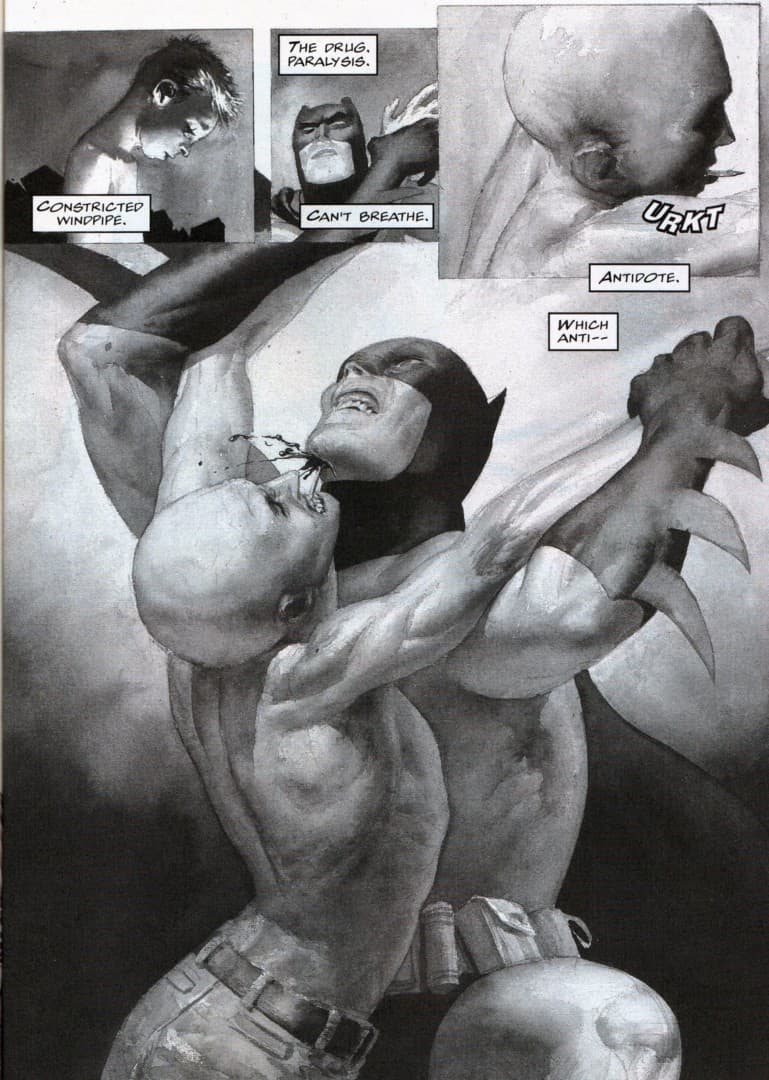
Batman: Gotham Knights #17 art by Aron Wiesenfeld (image courtesy of iloverobliefeld.com)
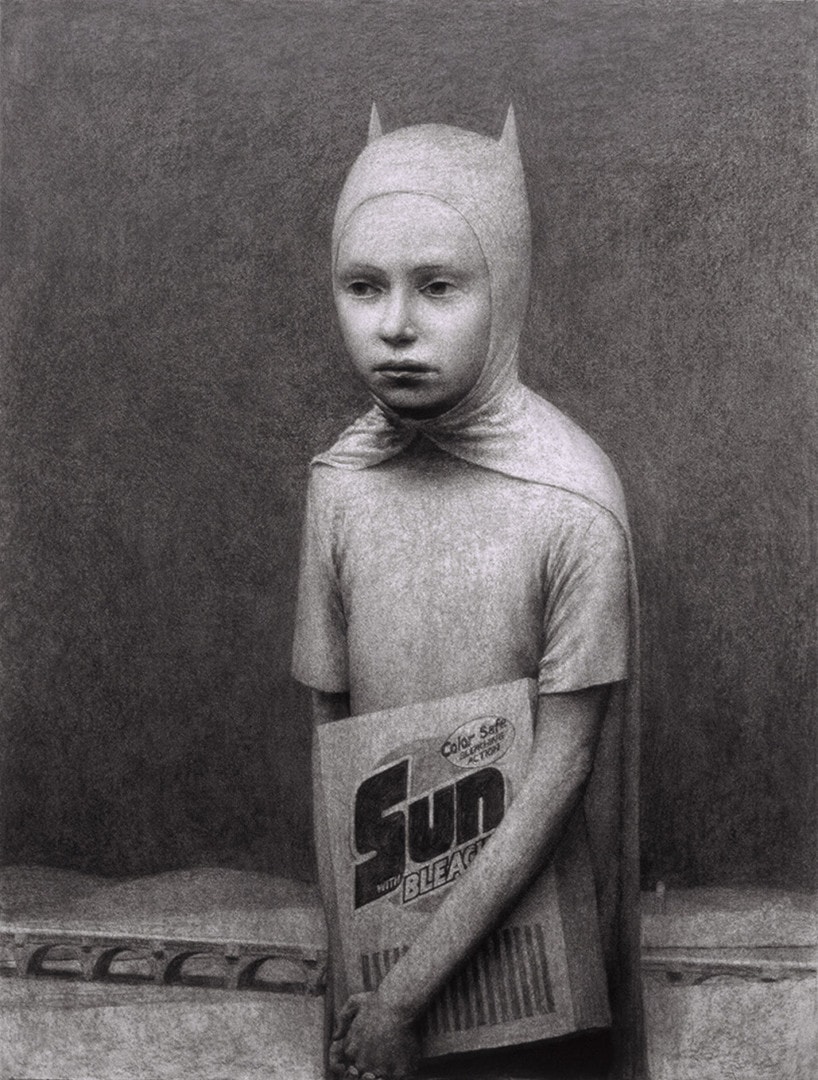
‘David’ by Aron Wiesenfeld
Some of your early charcoal work, like David and Leigh, have a slight continuation of the theme of the comic, but the style, and more so the intent, of your work, had changed. There is a measured calmness to it. For as dark and moody as the paintings may be, each is like a moment of pause for the subjects, and I’m guessing for you the artist as well. These moments of pause and reflection don’t tend to happen in superhero comics, or if they do, they are a single panel in a 20 something page book. What brought you to focus your body of work on these reflective moments?
I really like that about painting — the possibilities of interpretation of the single image. As opposed to comics, in which the art should be almost unnoticeable — It’s only about the story. There is a lot of crossover between the two mediums for me. For one, I owe my drawing knowledge to comics.
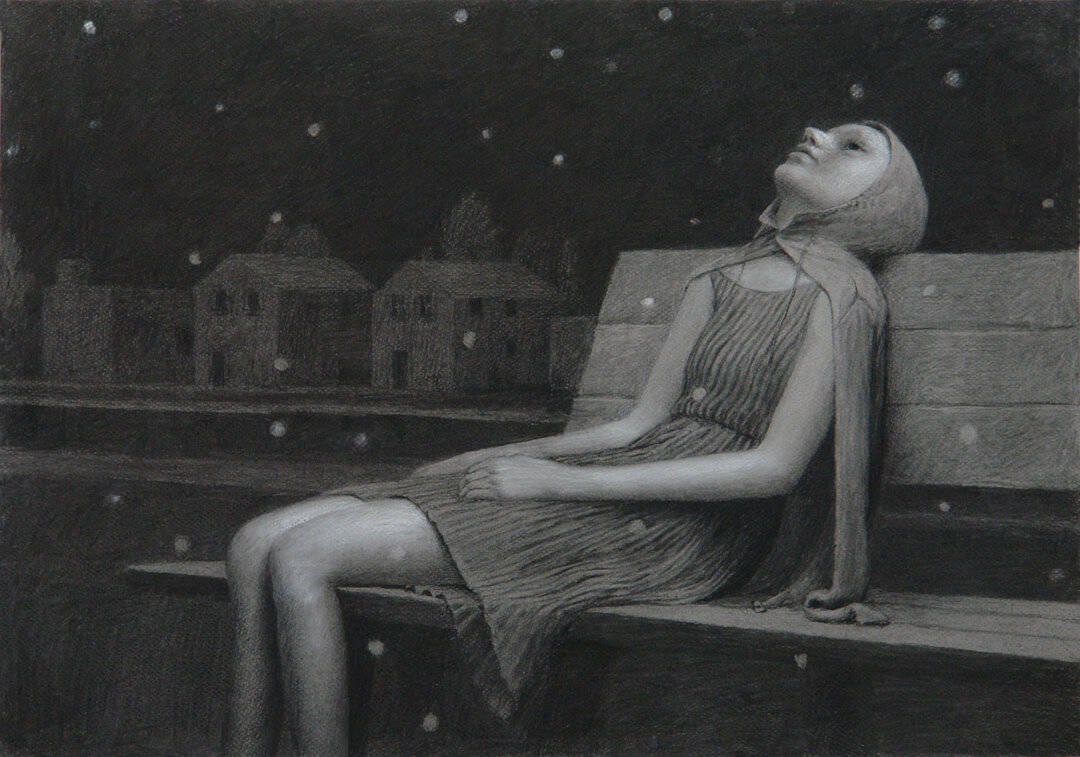
‘Leigh’ by Aron Wiesenfeld
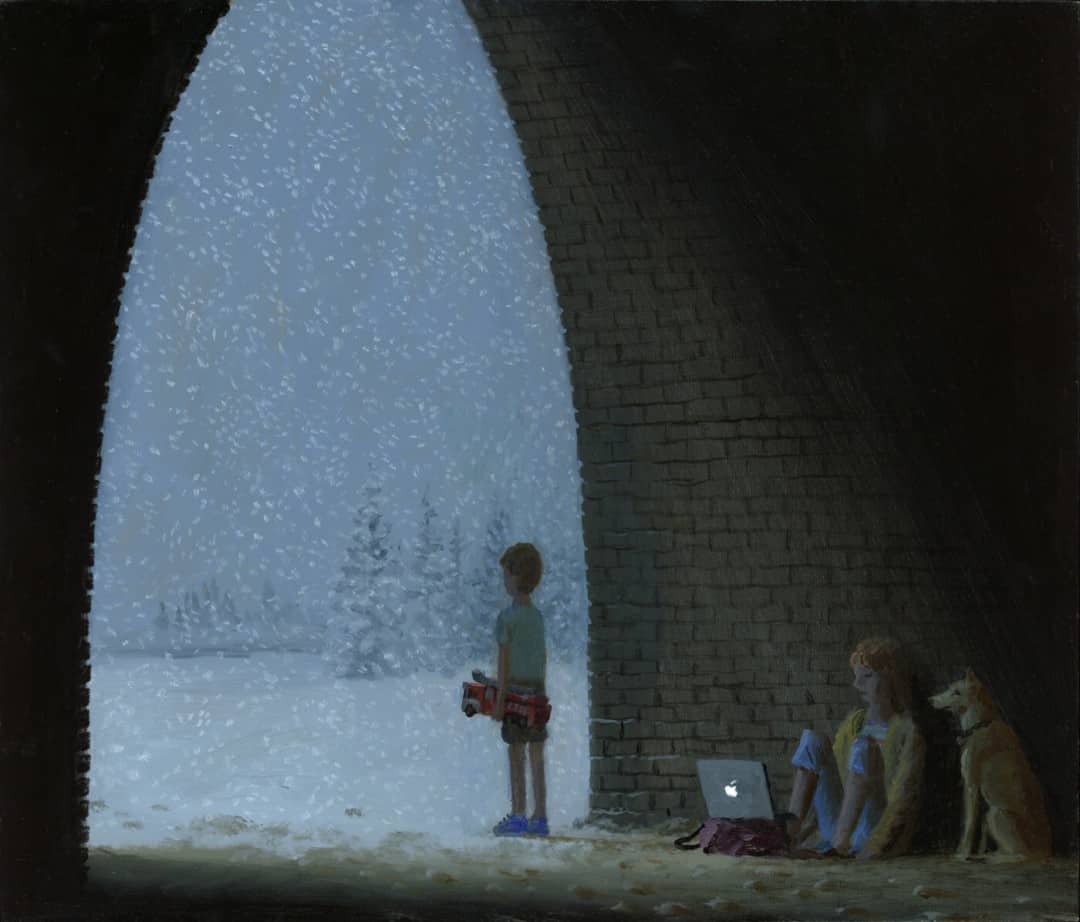
‘Hacker’ by Aron Wiesenfeld
Coming from the tight schedule and demands of comics, was it hard to adjust to working at your own pace? Do you try to keep a schedule for finishing pieces?
It’s hard to have a deadline when you would rather just let the piece take its own time, and see what happens. That’s true of painting and comics. But without deadlines, it’s hard to actually finish anything.
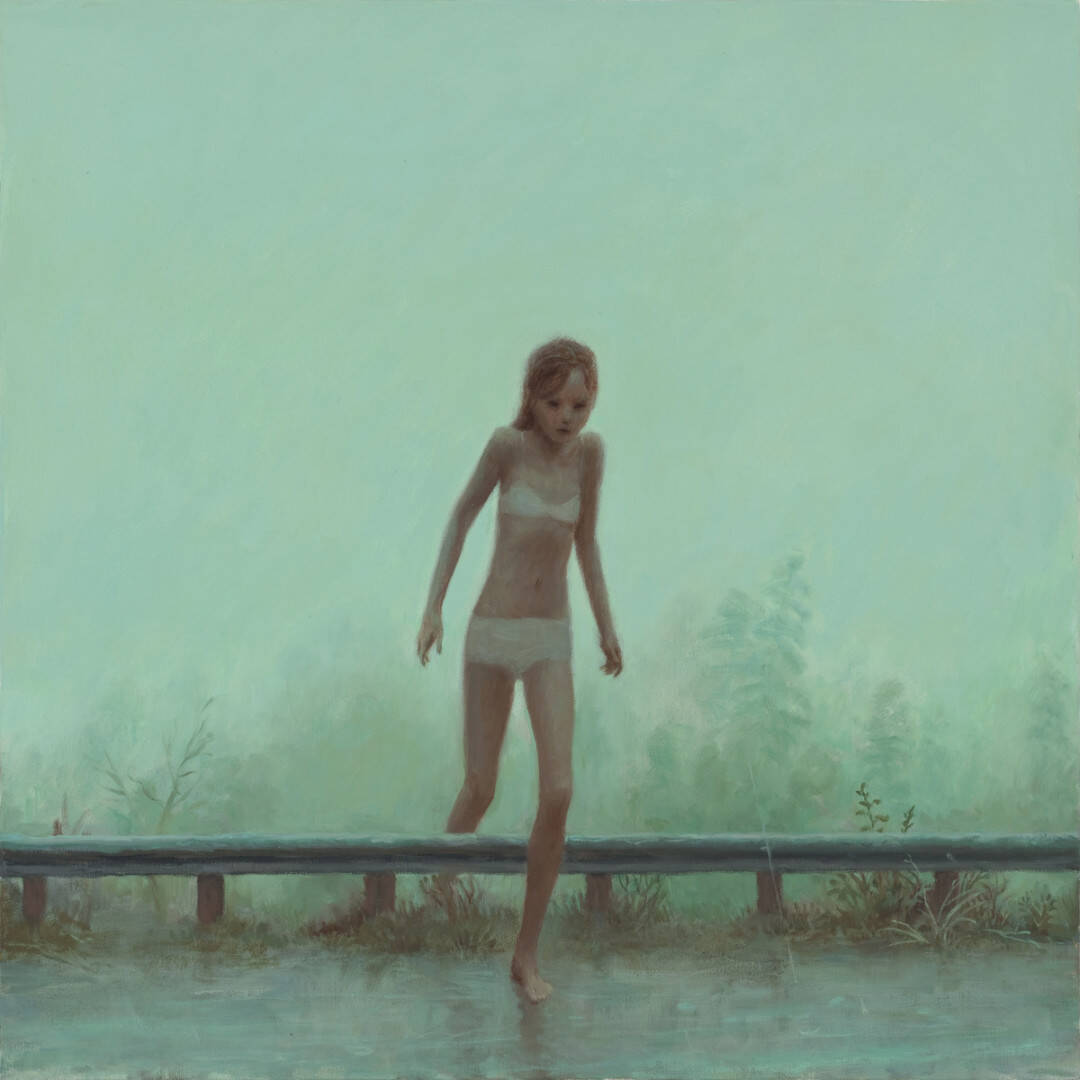
‘Flood’ by Aron Wiesenfeld

‘The Last Stop’ by Aron Wiesenfeld
Your work has a strong sense of narrative – nothing is clearly written out, but in each painting, there is a sense that we are seeing a small moment of a larger history. In 2017’s The Last Stop, it’s as if that girl had been there for years, growing up, beyond the size of her childhood dress and the family car that delivered her there. Are you writing out scenarios and clearly imagining these moments, or is each a spontaneous burst? I would imagine having such a lengthy career in comics, that ability to craft a single frame narrative comes in handy when standing at the canvas.
I do different things. Sometimes I have a clear idea, and sometimes it’s just a “notion” that seems to have potential. For example with that painting, I thought the idea of a rusted car on a beach was interesting. The girl came at the end. So to answer the question I didn’t plan it…but it wasn’t exactly spontaneous either. More like it evolved. I think that’s the best word.
You have clearly self-defined themes for your work. Your catalog is broken up into chapters like solo, boundary, transit, shelter, and so on. In each, a young girl faces the world of that theme alone. How did the stoic young female become the key figure in your work?
I don’t really know. Girls on the verge of becoming women are the characters I keep returning to. They have meaning for me, in their aspect of change, but I can’t exactly say why they are women as opposed to men. Perhaps it’s because women seem more internal than men. I want the viewer to see that there is something happening in the person’s head.
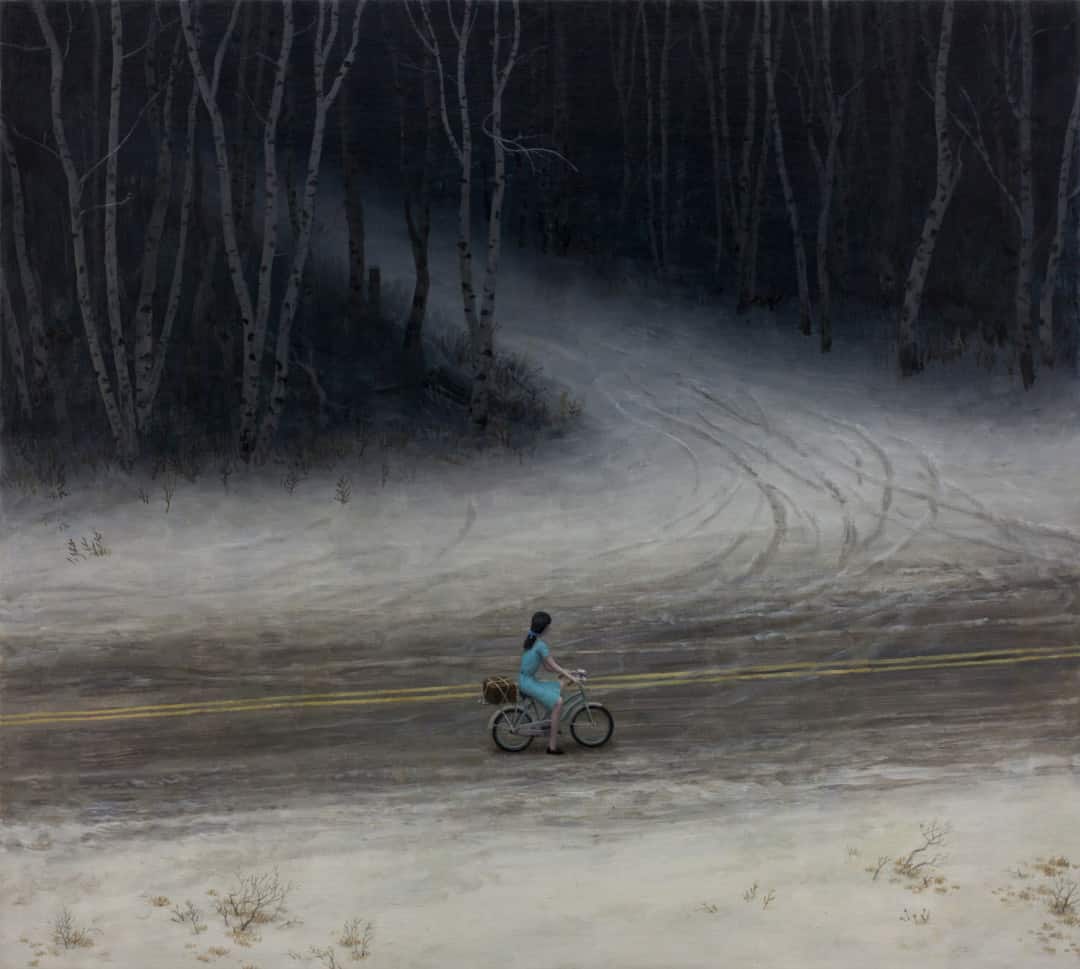
‘The Return’ by Aron Wiesenfeld
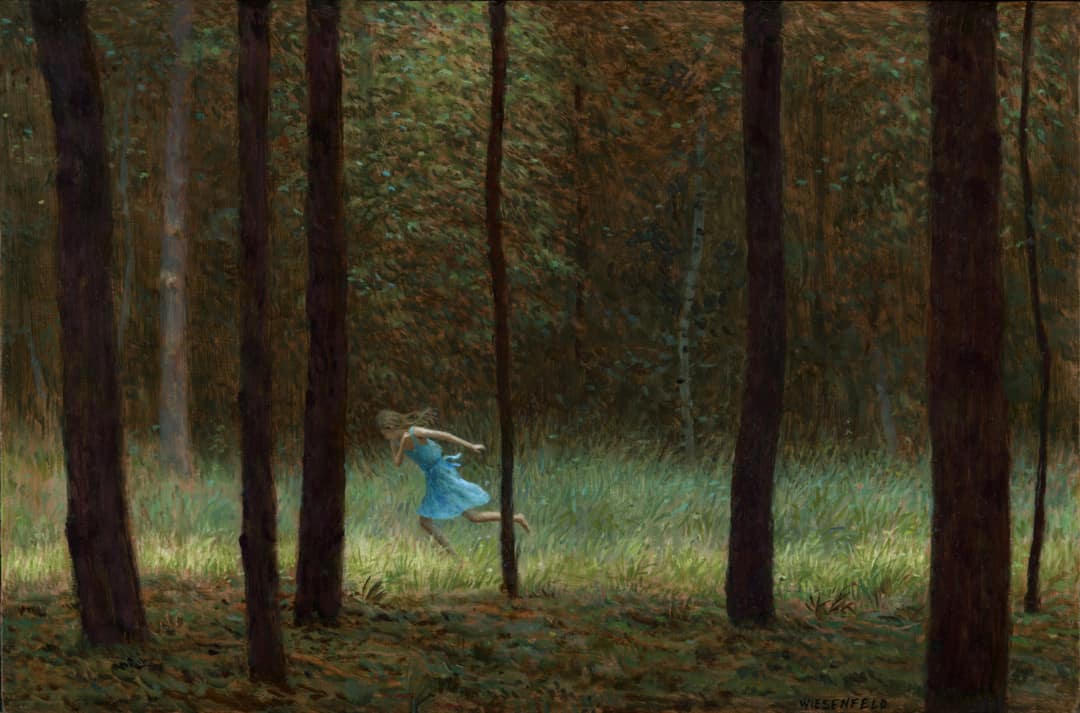
‘Bonny Doon’ by Aron Wiesenfeld
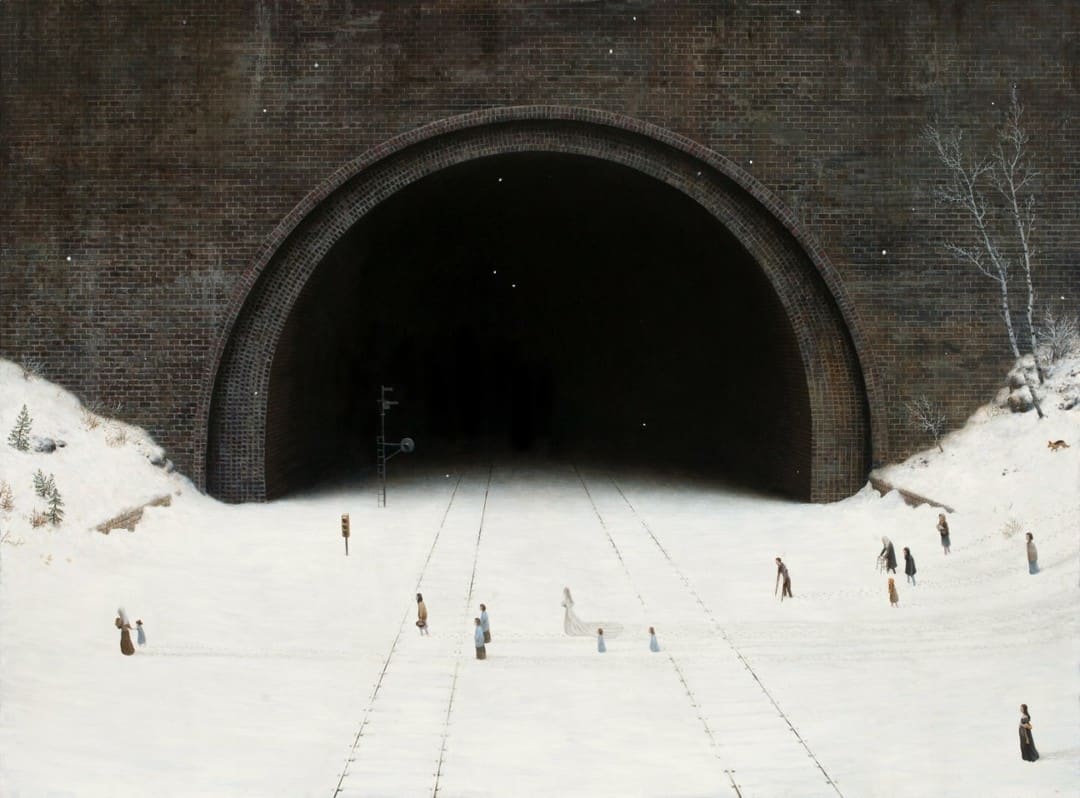
‘The Wedding Party’ by Aron Wiesenfeld
Loneliness, or isolation really, plays a large role in your work. Maybe it’s individualism? The Wedding Party immediately stands out for me – a small party crosses a snow-covered train track, bride dead center. They are each on their own, yet they are together in a community sort of way. The Wedding Party was done in 2011 and features one of the very few crowds you’ve painted. Is there a reluctance to show community? Do you find more to explore within the relationship of a single figure and nature?
I want intimacy between the viewer and subject. That’s not there with a group, but it worked better for that painting to have a group. I needed something as a foil to that large tunnel. A single figure just wasn’t able to carry that much weight.
I’m very interested in rituals that mark changes between phases of life, such as weddings, quinceañeras, and first communion. It’s part of that theme of becoming something different, but not yet there…right in the middle.
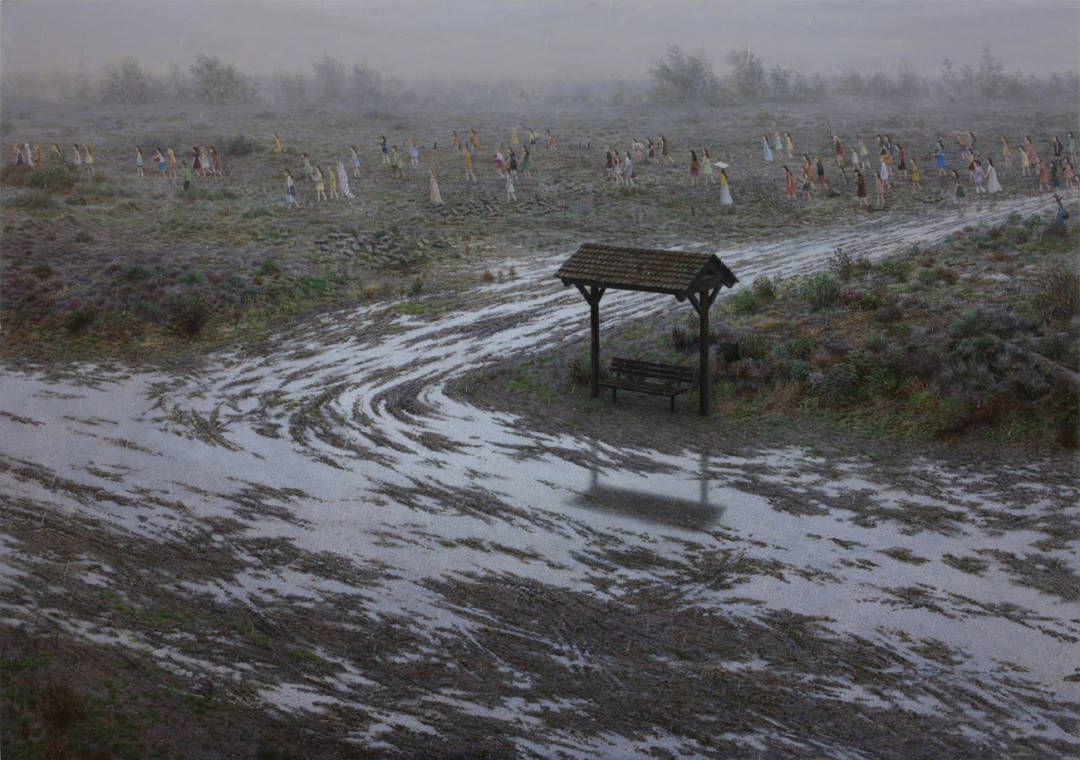
‘Border’ by Aron Wiesenfeld
You work at various sizes – are deciding on the canvas size once you have an idea of what you are going to paint, or does the canvas itself play a part in your compositions?
The way of cropping an image is so important. As a painting develops you are limited by the chosen canvas size, and you have to make decisions based on that. That’s why I prefer to work on unstretched canvas. I can decide on the cropping and dimensions at the end.
As a print collector and someone starting to buy more original works, I found you via your print releases, so this is where this question comes from — you have quite a few prints available. How are you deciding which pieces to make prints of? The Wedding Party has an edition of 500 while The Pool is only an edition of 68 – how do you land on the price and edition sizes?
Some are numbered editions in which the number is chosen in advance, and some are timed editions, which means the edition size is determined by the number of orders that come in during the timed release. That’s why some of them have odd numbers.

‘The Pool’ by Aron Wiesenfeld
Looking at the world right now, global pandemic, shelter in place orders – is this a time when you are working more or less?
We artists already live a pretty solitary life, so it wasn’t that much of an adjustment. There is a lot of darkness that people are confronting right now, and I wonder if they would prefer to look at happier paintings than mine 🙂
Do you find most of your inspiration from your own experiences or are you looking out into the world, hoping to reflect on that?
It’s both. All people are like prisms, with internal characteristics, through which the world is filtered. That’s the beauty of art, isn’t it? You can see that filtered world in the work, and compare it to your own, and you get a true sense of another person. It’s like telepathy.
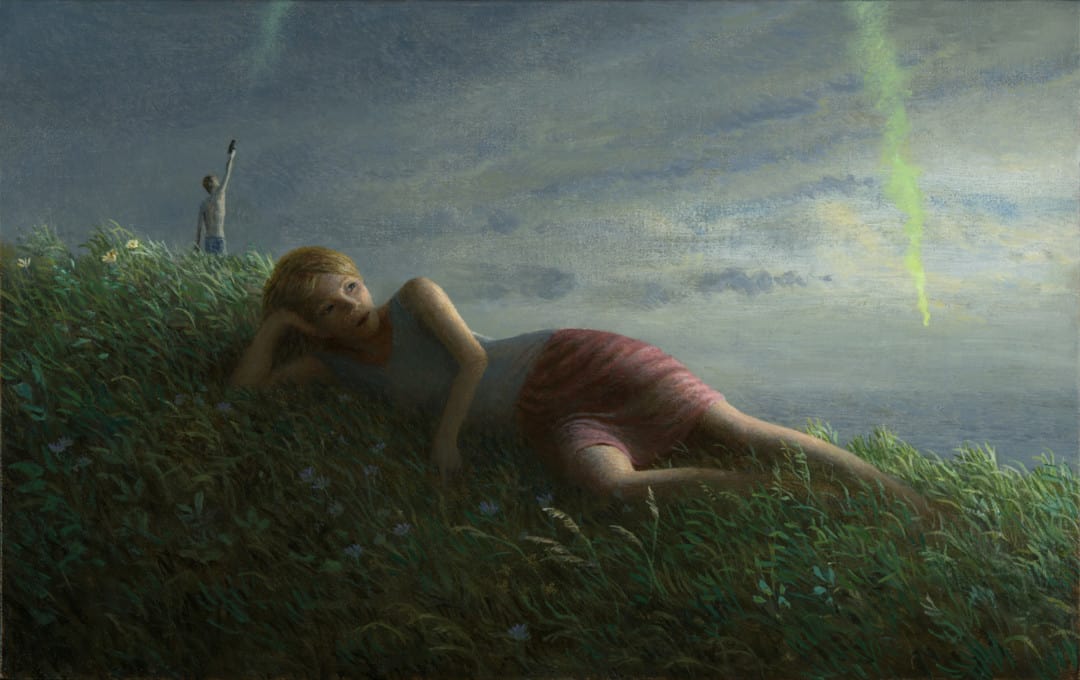
‘Flare’ by Aron Wiesenfeld
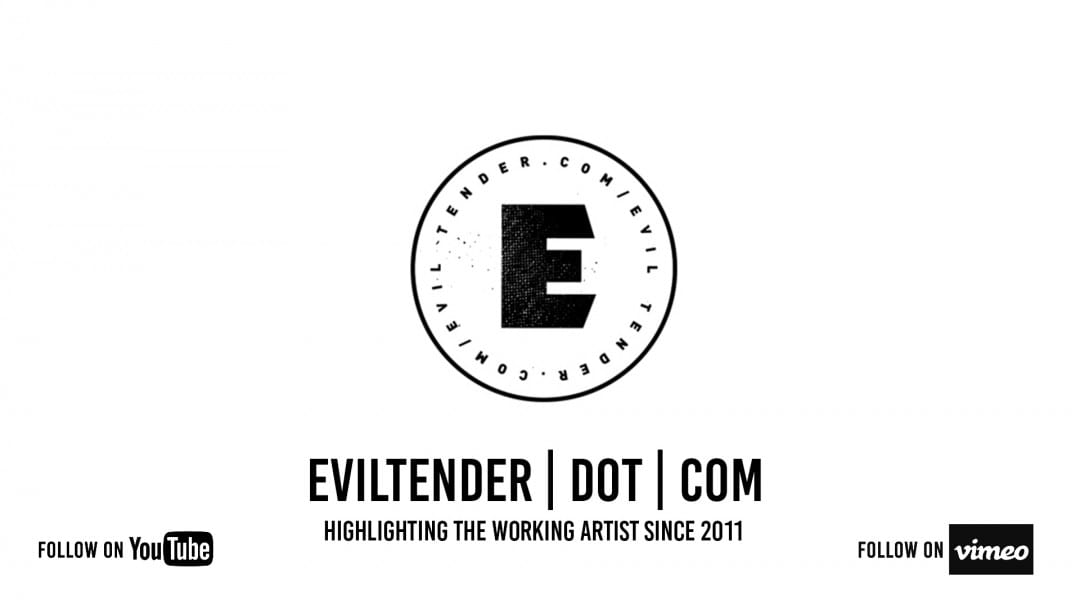
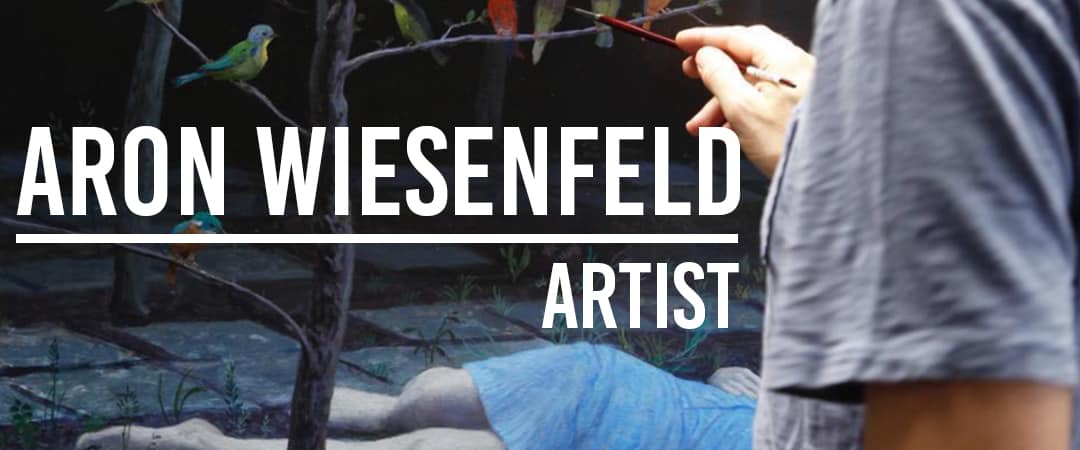

Such a great artist!